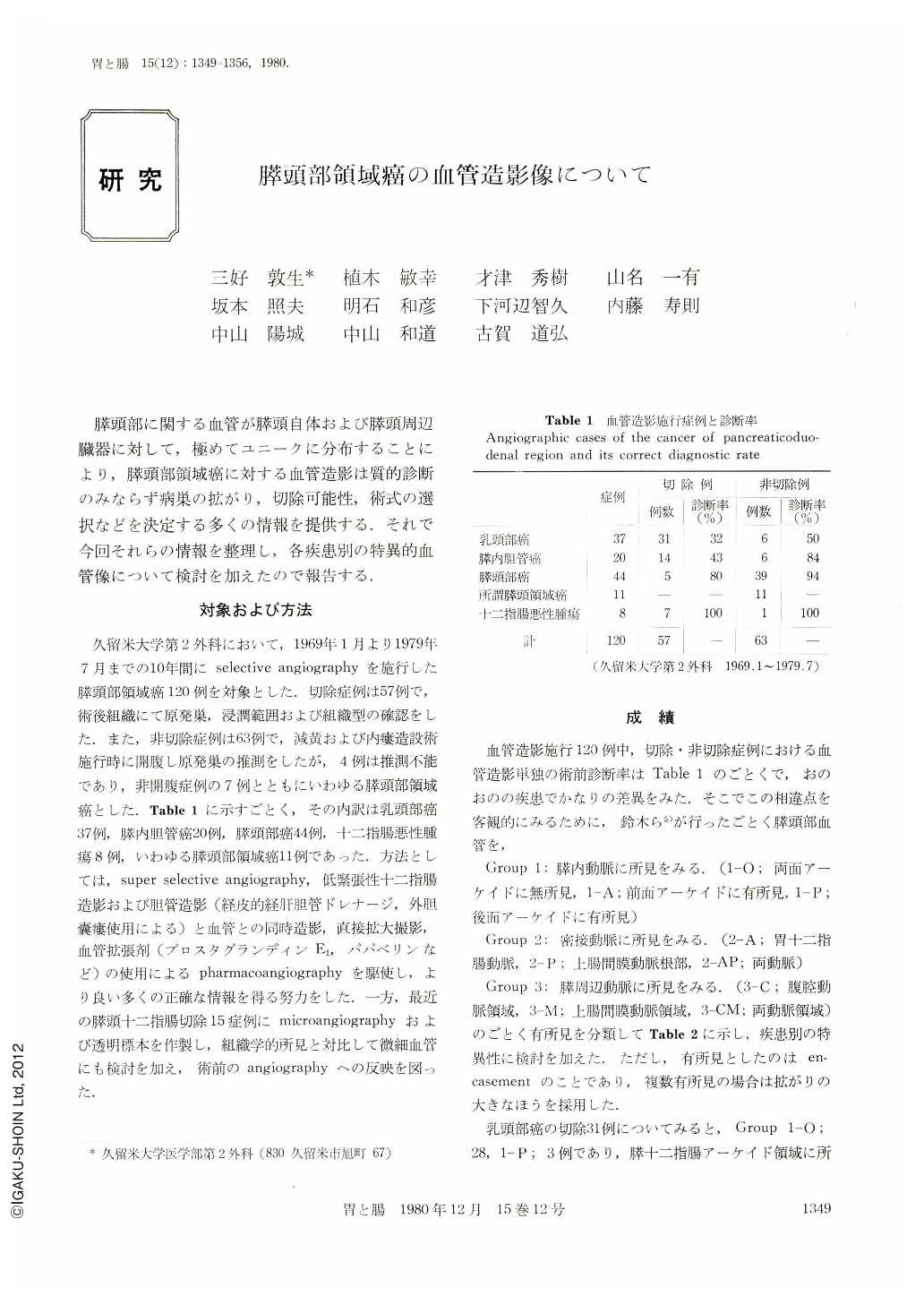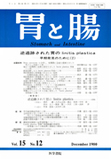Japanese
English
- 有料閲覧
- Abstract 文献概要
- 1ページ目 Look Inside
膵頭部に関する血管が膵頭自体および膵頭周辺臓器に対して,極めてユニークに分布することにより,膵頭部領域癌に対する血管造影は質的診断のみならず病巣の拡がり,切除可能性,術式の選択などを決定する多くの情報を提供する.それで今回それらの情報を整理し,各疾患別の特異的血管像について検討を加えたので報告する.
Angiographic findings in the 120 cases of cancer of the pancreaticoduodenal lesion during this decade were studied. The location of carcinoma and the number of cases were as follows : carcinoma of the ampulla Vater (37), the carcinoma of the distal portion of common duct (20), the carcinoma of pancreatic head (44), the so-called carcinoma of the pancreatic head lesion (11), the malignant duodenal lesion (8).
The extent and resectability of these tumors were studied by mean of the angiographic classification by Suzuki. Suzuki's classification was not adequately adapted in the ampulla Vater carcinoma and the intrapancreatic bile duct carcinoma. Therefore the original classification established by anatomical relation was studied
In carcinoma of the ampulla Vater, different angiographic findings were presented in its size and depth. Dilatation of feeding artery and tortuosity as an indirect finding were seen in the cases less than 2 cm in diameter of the tumor. Encasement and hypervascularity as the infiltrating sign were seen in cases 2 cm to 4 cm in diameter. Encasement and hypervascularity in all cases and tumor stain in two cases of 6 cases were seen in the cases more than 4 cm in diameter. In these cases, the lesion was extended to the primary muscular layer, and hypervascularity and encasement as a direct findinb were seen at the duodenal branch of pancreaticoduodenal arcade.
In the case of the intrapancreatic bile duct cancer, abnormal angiographic findings were seen mainly at the posterior superior pancreaticoduodenal artery. Therefore the extent and the resectability of these tumor in regard to the degree of this arteries' abnormality were estimated.
All cases which showed smooth encasement as an indirect finding of tumor were resected, and those which showed irregular encasement as a direct finding in less than half part of posterior arcade were resected. But only one case of irregular encasement in more than half the portion of the posterior arcade was resected, which others showed carcinomatous invasion to the other artery and tumor large in size.
Therefore the resectability of this tumor was determined by the extension of the angiographic abnormal finding in one half or less of the posterior arcade.

Copyright © 1980, Igaku-Shoin Ltd. All rights reserved.


